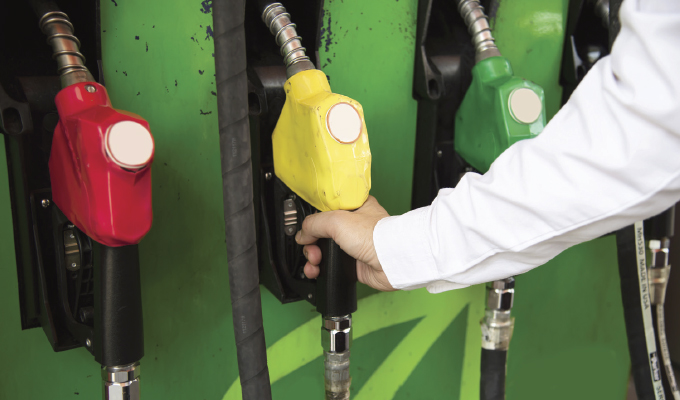U.S. average gas prices have remained above $3/gallon since May 2021. Geopolitical issues and trade wars have left businesses of all kinds facing high fuel prices with little promise of relief. In addition, businesses are challenged by the struggle to find good labor and ever-increasing labor costs.
Mid-sized fleets are taking a disproportionate hit when it comes to both of these challenges. Labor and fuel shouldn’t be eating into your profit margins. Not when there are so many tools available to streamline systems and reduce waste.
WHY COSTS ARE CRUSHING MID-SIZED FLEETS
Mid-sized fleets lack the advantage that big, national carriers have of being able to negotiate volume discounts on fuel or hedge against price volatility. To compound the challenge, margins tend to be tight, especially in a post-pandemic landscape. There isn’t much wiggle room to respond to fuel price increases or the increased labor demands.
Transportation in general is stuck in a tricky position in which older drivers aren’t being replaced by younger ones. The labor pool is shrinking as a result. This, alongside higher insurance costs, salary demands, etc., can make the tight margins of mid-sized fleets feel crushing.
Businesses of this size are often caught between two extremes. They’re often too small to spread costs over a broad network and yet too big to harness the agility of more niche fleets. That’s why soaring expenses can so easily hurt those in the middle, unless they adapt their approach.
TELEMATICS AND ROUTE OPTIMIZATION
Logistics optimization is all about addressing the issues that slow fleets down or make them more expensive. One of the best ways to do that is by integrating smart systems that transform routing and driving decisions. Vehicle telematics provide timestamped position information for vehicles in transit. This means that every routing decision is tracked, so it can be monitored in real time and analyzed later with predictive algorithms.
This helps save money in three key ways. Fleets can track fuel usage and any risky driving that might be using more fuel than necessary. For example, telematics will show the number of sudden braking and speeding incidents. Most insurance providers incentivize the use of telematics and will offer discounted rates to those who use them. Insurers are also pro-telematics due to the link between the technology and accident prevention. Telematics can send alerts about driver behavior and accident warning signs, which helps fleets save on the costs of vehicle damage and general maintenance issues.
Telematics systems work best, however, when partnered with route optimization software. One tracks the driver, the other keeps an eye on the route. Together, they provide a smart system that uses data analytics and real-time tracking to ensure that routing and driving are more fuel-efficient and place less strain on fleet profit margins. The data these technologies collect can provide ongoing insight into optimization opportunities. Routing platforms can even be used to predict how best to tackle transportation going forward in terms of planning stops better, re-thinking routes, and avoiding bad weather or traffic.
DRIVER TRAINING AND INCENTIVES
As anyone with a fitness tracker can attest, a tracker on its own doesn’t necessarily incentivize behavioral changes. The same is true of drivers and vehicle telematics. Telematics can flag poor driving patterns, but the information needs to be paired with training and reward programs if that data is ever going to shift. Training is what can educate drivers on important stats like the fact that, according to the US Department of Energy, idling an engine for as little as 10 seconds uses more fuel than stopping and restarting a vehicle.
Reducing idling time can be done by tracking idle time on telematics and providing drivers with monthly reports; requiring those with poor performance to undergo updated training; and rewarding reduced idling time with extra time off or other incentives. The trick with the above is balancing telematics data with training so that over time, driver behavior is changed and fuel spend decreases. The data needs to have real-world consequences or rewards to truly make a dent in how drivers approach their work.
PREVENTIVE MAINTENANCE STRATEGIES
Repairs and maintenance are the third biggest annual operating cost for fleet owners, after fuel and truck payments. When it comes to those repair costs, it’s roadside assistance and reactive services that tend to run up the biggest bills. Preventive maintenance is the key to avoiding those costs. It’s also yet another area where telematics is an effective tool. By tracking driver behavior and the stress they may be placing on a vehicle in terms of speed and mileage, the technology can flag when trucks need to be serviced to avoid more costly repairs in the future.
Planning services according to mileage is quickly becoming a thing of the past. Predictive intervals informed by telematics are much more effective because they take the full picture of the vehicle into account and address maintenance issues before they cause breakdowns. Not only does this extend equipment lifespan, but it also reduces service costs.
CUT COSTS WITHOUT CUTTING CORNERS
Technology like telematics and routing optimization software gives medium-sized fleets a chance to address core challenges and expenses without lowering quality. If anything, the technology ensures better output while lowering the spend on fuel, maintenance, and insurance. It’s a true win-win that cuts costs and waste without ever cutting corners.

about the author
Nick Fryer is vice president of marketing for Sheer Logistics. He has over a decade of experience in the logistics industry, spanning marketing, public relations, sales enablement, M&A and more at 3PLs and 4PLs including AFN Logistics, GlobalTranz, and www.sheerlogistics.com.


